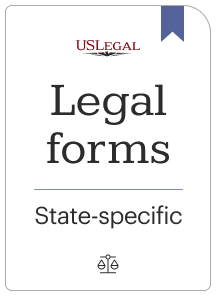

This AHI form is used to inform the employee they have been suspended from their job without pay due to a company policy violation. A letter of suspension without pay is a formal written communication issued by an employer to an employee, informing them of a temporary suspension from work without receiving their regular salary or wages. It is typically an employer's response to an employee's misconduct, violation of company policies, poor performance, or any act that warrants disciplinary action. The letter serves as a notification to the employee about the suspension without pay, detailing the reasons behind it, the duration of the suspension, and any expectations or conditions that the employee must meet to resume work. It provides important information to the employee to ensure transparency and clarity regarding the consequences of their actions. Additionally, the letter of suspension without pay also helps the employer maintain a productive and disciplined work environment. Different types of suspension without pay letters can vary depending on the severity of the violation and the policies of the company. Some specific types of letters of suspension without pay may include: 1. Suspension for misconduct: This type of letter is issued when an employee engages in behavior that goes against company regulations or code of conduct, such as insubordination, harassment, theft, or falsification of records. 2. Suspension for poor performance: If an employee consistently fails to meet job expectations or exhibits a significant decline in their work performance, an employer may issue a letter of suspension without pay as a disciplinary measure. 3. Suspension for policy violation: In cases where an employee breaches company policies or procedures, such as unauthorized absence, violation of safety rules, or misuse of company resources, a letter of suspension without pay can be issued. 4. Suspension for disciplinary action: This type of letter is given when an employee's behavior warrants disciplinary action, such as repeated warnings, previous suspensions, or other serious infractions. In conclusion, a letter of suspension without pay is an essential tool for employers to address and rectify employee misconduct, policy violations, or performance issues. It aims to communicate the consequences of their actions, specify the terms of the suspension period, and provide an opportunity for the employee to correct their behavior. By utilizing such letters effectively, employers can maintain workplace discipline while fostering a culture of accountability and professionalism.
A letter of suspension without pay is a formal written communication issued by an employer to an employee, informing them of a temporary suspension from work without receiving their regular salary or wages. It is typically an employer's response to an employee's misconduct, violation of company policies, poor performance, or any act that warrants disciplinary action. The letter serves as a notification to the employee about the suspension without pay, detailing the reasons behind it, the duration of the suspension, and any expectations or conditions that the employee must meet to resume work. It provides important information to the employee to ensure transparency and clarity regarding the consequences of their actions. Additionally, the letter of suspension without pay also helps the employer maintain a productive and disciplined work environment. Different types of suspension without pay letters can vary depending on the severity of the violation and the policies of the company. Some specific types of letters of suspension without pay may include: 1. Suspension for misconduct: This type of letter is issued when an employee engages in behavior that goes against company regulations or code of conduct, such as insubordination, harassment, theft, or falsification of records. 2. Suspension for poor performance: If an employee consistently fails to meet job expectations or exhibits a significant decline in their work performance, an employer may issue a letter of suspension without pay as a disciplinary measure. 3. Suspension for policy violation: In cases where an employee breaches company policies or procedures, such as unauthorized absence, violation of safety rules, or misuse of company resources, a letter of suspension without pay can be issued. 4. Suspension for disciplinary action: This type of letter is given when an employee's behavior warrants disciplinary action, such as repeated warnings, previous suspensions, or other serious infractions. In conclusion, a letter of suspension without pay is an essential tool for employers to address and rectify employee misconduct, policy violations, or performance issues. It aims to communicate the consequences of their actions, specify the terms of the suspension period, and provide an opportunity for the employee to correct their behavior. By utilizing such letters effectively, employers can maintain workplace discipline while fostering a culture of accountability and professionalism.
With a large US Legal Forms catalog at hand, you do not have to spend time looking for the appropriate template across the internet. Take advantage of the library’s easy navigation to get the correct template for any situation.